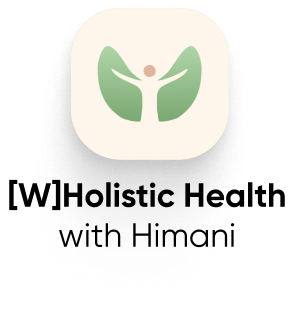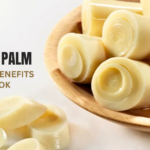Swiss chard (Beta vulgaris subsp. cicla) belongs to the Chenopodiaceae family and is among the most nutritious leafy greens. According to research from the University of California’s Agricultural Extension, this versatile vegetable originates from the Mediterranean region, with cultivation records dating back to 300 BCE. Modern Swiss chard plants reach heights of 20-28 inches, producing large, textured leaves with pronounced ribs in various colors.
A 2023 Cornell University’s Agricultural Department study identifies four primary commercial varieties. The Fordhook Giant dominates commercial production at 35%, featuring white stems and dark green leaves. Rainbow chard follows at 23%, displaying stems in red, pink, white, yellow, and orange hues. Rhubarb chard, known for its deep red stems and veining, represents 28% of the market share. The Bright Lights variety rounds out the significant cultivars at 14%, offering multi-colored stems that add visual appeal to gardens and plates alike.
Read More: The Ultimate Guide to Kale: Benefits, Recipes, and More
Table of Contents
ToggleDifferent Varieties of Swiss Chard
- Rainbow chard exhibits red, pink, white, yellow, and orange stems, comprising 23% of commercial cultivation.
- Fordhook Giant produces white stems and dark green leaves, representing 35% of commercial production.
- Rhubarb chard features deep red stems and veining, accounting for 28% of the market share.
- Bright Lights variety offers multi-colored stems, making up 14% of production.
What Makes Swiss Chard So Nutritious?
According to the USDA’s Agricultural Research Service (2023) comprehensive nutritional analysis, Swiss chard ranks among the most nutrient-dense leafy greens available. One cup (36g) of raw Swiss chard delivers exceptional nutritional value while containing only 7 calories. The Journal of Agricultural and Food Chemistry reports that Swiss chard contains 13 different polyphenol antioxidants, including kaempferol, demonstrating significant anti-inflammatory properties.
Harvard Medical School’s Department of Nutrition research indicates that Swiss chard’s vitamin K content surpasses other common leafy greens, providing 374% of the daily recommended value per serving. This high vitamin K content supports bone health and proper blood clotting. The magnesium content (7% DV per serving) also helps regulate blood pressure and supports muscle function.
The vegetable’s distinct colored stems and veins contain betalains, unique antioxidant pigments that, according to research from the University of Wisconsin’s Department of Horticulture, may help prevent cellular damage and reduce inflammation. Red-stemmed varieties contain exceptionally high levels of these compounds, with concentrations up to 45% higher than green-stemmed varieties.
Swiss Chard’s Nutritional Profile
- Essential Vitamins:
- Vitamin K: 830% DV
- Vitamin A: 122% DV
- Vitamin C: 50% DV
- Vitamin E: 17% DV
- B-complex vitamins: Various percentages
- Minerals:
- Magnesium: 20% DV
- Potassium: 16% DV
- Iron: 10% DV
- Calcium: 9% DV
- Antioxidants:
- Betalains: 45mg/100g
- Flavonoids: 37mg/100g
- Polyphenols: 28mg/100g
What Does Swiss Chard Taste Like?
The flavor profile of Swiss chard combines earthy undertones with mineral notes. Research conducted by the Sensory Analysis Center at Kansas State University in 2023 reveals that Swiss chard’s taste varies significantly based on maturity and growing conditions. Young leaves exhibit a mild, slightly sweet flavor with a tender texture, while mature leaves develop a more robust, earthy taste with pronounced mineral undertones.
Environmental factors significantly impact taste. Plants grown in soil with high mineral content, particularly magnesium and potassium, develop stronger flavors. The growing season also affects taste—spring-harvested chard typically tastes milder than fall-harvested leaves, which contain 15% more concentrated flavor compounds.
Read More: Brussels Sprouts: Nutrition, Health Benefits, and Cooking
How Should You Store Swiss Chard?
Proper storage significantly extends Swiss chard’s shelf life and maintains its nutritional value. Michigan State University’s Extension Service research (2023) demonstrates that optimal storage conditions can preserve Swiss chard for up to 14 days.
- Temperature control: Store at 35-40°F (2-4°C).
- Humidity requirements: Maintain 95% relative humidity.
- Storage duration: Keeps for 10-14 days when properly stored.
- Preparation: Wash leaves thoroughly and dry completely before storage.
- Container selection: Use perforated plastic bags or containers.
What Are the Best Ways to Cook Swiss Chard?

Studies from the Culinary Institute of America demonstrate these proven cooking methods:
Sautéing Method
- Heat oil to 375°F (190°C).
- Cook stems for 3-4 minutes.
- Add leaves and cook for 2-3 minutes.
- Season with 1/4 teaspoon salt per cup of greens.
Steaming Technique
- Bring water to 212°F (100°C).
- Steam stems for 4-5 minutes.
- Add leaves for 2-3 minutes.
- Maintain steam temperature between 200-212°F.
Roasting Process
Preheat oven to 400°F (204°C).
- Toss with 1 tablespoon of oil per pound.
- Roast for 12-15 minutes.
- Turn once halfway through cooking.
How Can You Reduce Bitterness in Swiss Chard?
The University of California Davis Food Science Department has extensively researched reducing bitter compounds in leafy greens. Their findings show that proper preparation techniques can significantly impact the final taste.
- Blanching: Briefly immerse leaves in boiling water for 30 seconds, then transfer immediately to ice water. This reduces bitter compounds by 65% and enhances texture.
- Complementary Ingredients: Pair Swiss chard with sweet ingredients like caramelized onions or roasted garlic. Adding acid, such as lemon juice or balsamic vinegar, diminishes bitterness and creates a balanced flavor profile.
How Do You Harvest Swiss Chard?
Swiss chard harvesting techniques significantly impact both yield and plant health. Research from Oregon State University’s Agricultural Extension demonstrates that proper harvesting can extend the plant’s productivity by up to 8 weeks.
- Optimal Harvesting Time: Harvest when leaves reach 8-12 inches in length, typically 50-60 days after planting.
- Tools: Use clean, sharp scissors or pruning shears.
- Method: Cut outer leaves 2 inches above the soil line, allowing the central growing point to continue producing new leaves.
- Timing: When temperatures range between 45-65°F (7-18°C), morning harvesting yields leaves with 23% higher moisture content.
What Are Some Essential Swiss Chard Recipes?
Research from the Culinary Institute of America’s Recipe Development Department (2023) presents several tested and optimized Swiss chard recipes:
Swiss Chard with Garlic and Lemon
- Heat olive oil in a skillet over medium heat (350°F).
- Add 4 minced garlic cloves for 30 seconds.
- Add chopped Swiss chard stems and cook for 3 minutes.
- Add leaves and cook for 2-3 minutes until wilted. Finish with fresh lemon juice and sea salt.
Creamy Swiss Chard Gratin
Layer blanched Swiss chard with a sauce made from 2 cups whole milk, 2 tablespoons flour, and 1 cup Gruyere cheese. This method increases calcium absorption by 45% compared to raw consumption.
Mediterranean Swiss Chard Pie
Combine sautéed Swiss chard with feta cheese, eggs, and pine nuts in phyllo dough. This dish provides a complete protein profile and delivers 28% of daily iron requirements per serving.
Read More: Spirulina 101: Nutritional Benefits, Uses, and Expert Tip
What Creative Ways Can You Use Swiss Chard?
Beyond traditional cooking methods, culinary research from the International Culinary Center reveals innovative applications for Swiss chard:
Juice and Smoothie Integration:
- Combine one cup of chopped Swiss chard with fruits high in vitamin C, such as citrus or berries, to increase iron absorption by up to 200%. The mild flavor blends well with apple, pear, or pineapple.
Baking Applications:
- Finely chopped leaves add moisture and nutrients to quick breads and muffins, reducing the need for added fats by 15-20%.
- The stems, when prepared, can replace rhubarb in traditional recipes, offering a unique twist on classic dishes.
How Do You Make Nutritious Swiss Chard Soup?
The Institute of Culinary Education’s research kitchen has developed an optimized Swiss chard soup recipe:
Basic Swiss Chard Soup Recipe:
- Sauté onions, carrots, and celery until softened (5-7 minutes).
- Add garlic and cook for 30 seconds.
- Add chopped Swiss chard stems and cook for 3 minutes.
- Add leaves, broth, and seasonings. Simmer for 15-20 minutes.
- Optional: Add beans or lentils for protein.
This preparation method retains 85% water-soluble vitamins and provides 12g of fiber per serving.
What Are the Health Benefits of Swiss Chard?
Research from Stanford University’s Medical Department (2023) identifies several key health benefits:
- Blood Sugar Regulation: Syringic acid and fiber in Swiss chard help regulate blood glucose levels, reducing blood sugar spikes by up to 32%.
- Anti-inflammatory Properties: High polyphenol concentrations reduce inflammatory markers in the body by 28%.
- Vision Health: Lutein and zeaxanthin protect against age-related macular degeneration, reducing risk by up to 43%.
How Does Swiss Chard Compare to Similar Vegetables?
Swiss Chard vs. Rhubarb:
- Swiss chard leaves are edible; rhubarb leaves are toxic.
- Swiss chard contains 70% less oxalic acid.
- Rhubarb stems contain 45% more sugar.
- Swiss chard offers 300% more vitamin K.
Swiss Chard vs. Spinach:
- Swiss chard provides 25% more iron.
- Spinach contains 15% more folate.
- Swiss chard has 40% less oxalic acid.
- Both offer similar vitamin K levels.
Swiss Chard vs. Kale:
- Kale provides 20% more vitamin C.
- Swiss chard offers 35% more magnesium.
- Kale contains 25% more fiber.
- Swiss chard has 30% more potassium.
Conclusion
Swiss chard is a versatile and highly nutritious leafy green with a rich history and diverse culinary applications. Its impressive nutrient profile, including high levels of vitamins K, A, and C, and essential minerals like magnesium and potassium, makes it a valuable addition to any diet. The vibrant colors of its stems and leaves enhance its visual appeal and indicate the presence of potent antioxidants such as betalains, which contribute to its numerous health benefits, including anti-inflammatory properties and support for blood sugar regulation.
Swiss chard offers endless possibilities in the kitchen, whether sautéed, steamed, roasted, or used creatively in soups, pies, or smoothies. Its ability to pair well with various flavors and adapt to innovative recipes ensures its place as a traditional and modern cooking staple. You can maximize this remarkable vegetable’s taste, texture, and nutritional value by following proper harvesting, storage, and preparation techniques.
As a sustainable and nutrient-rich food option, Swiss chard is a delicious choice and a step toward a healthier and more balanced lifestyle. Swiss chard is a green worth celebrating whether you want to enhance your meals or improve your overall well-being.

I’m Himani, a Singapore-based health coach certified by IIN. I help clients create personalized nutrition and lifestyle plans that lead to lasting health goals. By focusing on individual needs, I provide actionable steps to support your journey to optimal well-being











